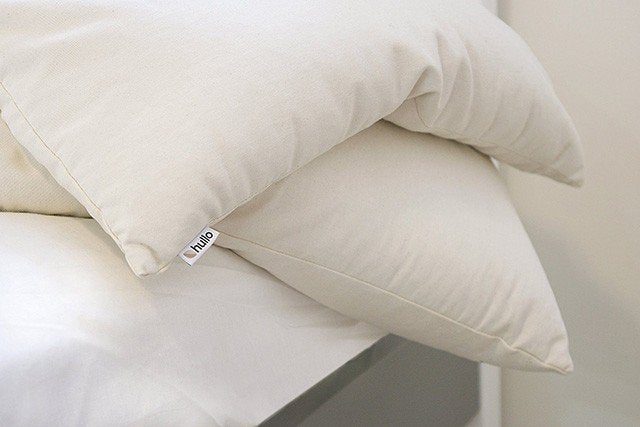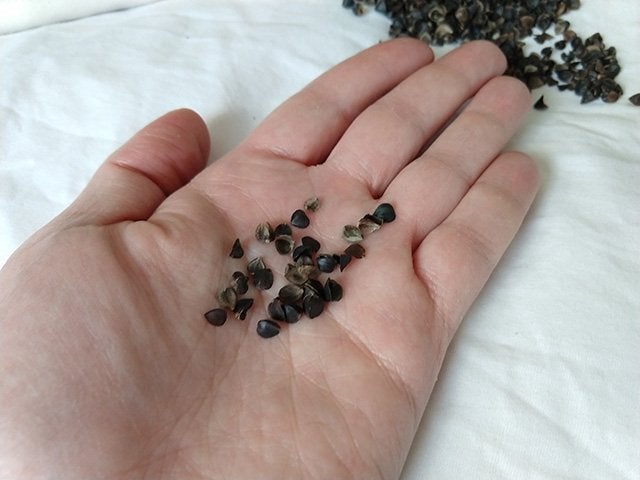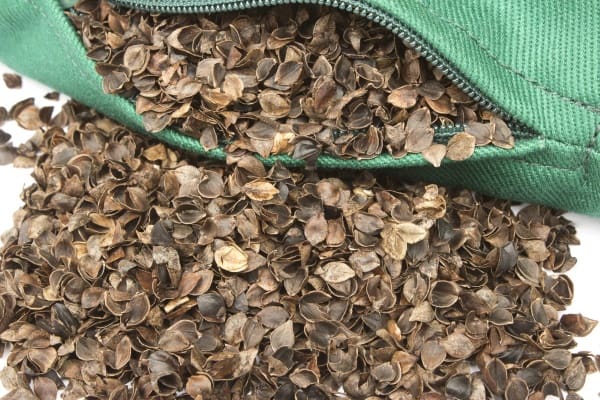Most of your favorite comfort products don’t last a lifetime. This can be frustrating when trying to find replacements for items such as your mattress and pillow, items that may no longer be made exactly that same as it once was when originally purchased. On average, most pillows only last 18 months to 3 years, with a few boasting a longer lasting comfort.
Buckwheat pillows are one such item with claims that 10 years of life. But the questions remains: how long exactly does a Buckwheat pillow last? And is 10 years a realistic number, or just a claim made to help sell the product?
What is a Buckwheat Pillow?
Buckwheat is a traditional Asian plant that produces a grain-like seed used for both animal fodder and ground into a flour-like substance for baking. This seed is surrounded by a husk, which is what is harvested after the removal of the seed and used as the filling within a buckwheat pillow.
This strong, yet compressible hull, has a traditional use in Japan and other Asian countries to help provide proper sleep posture in order to relieve headaches, neck and back tension, and reduce snoring. They also are considered hypoallergenic and are very cool to sleep upon due to a large number of air pockets created by their shape.
They also have variable casings made of cotton, silk, bamboo, or similar blends to provide a thick, protective surface. A zipper provides access to the hulls to adjust comfort or allow them to refreshen. Be aware that buckwheat pillows are heavy. On the lighter side, they weigh around 4 pounds but can easily weight up to 12 pounds depending on the size of the pillow and the overall firmness and feel you desire. Because of this, they are basically a pillow that’s inclusive for sleeping upon and not for joint pressure reduction or lounging on your back.
Who is a Buckwheat Pillow For?
Although more specific to back and side sleepers, some stomach sleepers also claim comfort from the pillow since many of these pillows can be adjusted for its height and the amount of fill. Back sleepers need a thinner but supportive pillow that provides support to the back of their head and neck to help keep it aligned with their spine. Side sleepers need a thicker surface that also holds their neck in a cervical alignment but provides a true fill to the unique shape between the head and shoulders to allow for true support and comfort for soft tissue relaxation.
The traditionally thicker case keeps you from feeling the husks against your skin, but you can still hear them rustle against each other inside as you shape or shift it in position. This doesn’t always endear them to everyone and is therefore not always the best fit for many as they do take some time to get used to.
Buckwheat pillows are also popular to many vegans and are an environmentally friendly choice- depending on the type of casing it is housed in. For those looking for products that support a specific lifestyle, these may be a good suggestion.
What Benefits Does a Buckwheat Pillow Have?
Buckwheat pillows are responsive to weight but work best when shaped a bit before settling your head and neck onto the pillow. This creates a very personalized and unique shape to fit your head. It also conforms well to the shape of your shoulders if you press against it. Those who struggle with neck and back pain, headaches, migraines, and snoring turn to buckwheat pillows to see if a solution can be found within their unique malleability and comfort properties.
You may want to read: Benefits and Side Effects of a Buckwheat Pillow You Need to Know
How Long Should a Buckwheat Pillow Last?
Which brings us to our original question of how long a buckwheat pillow should last. As mentioned, buckwheat hulls are very durable. Despite being somewhat easy to compress, they do not break down easily and can last quite a long time, although through wear-and-tear can begin to crack and lose their unique shape and strength. In fact, many manufacturers of this traditional pillow suggest removing handfuls of the husks from time to time and replacing them to freshen the fill.
The ease of removing the pillow also lends itself to being able to completely replace the hulls as you see fit, which technically means the pillow could last forever…can it?
The question about the life of the pillow truly rests with the material used in the casing. Hulls can be replaced, removed, and refreshed for as long as the casing lasts- but how long will a casing last? In general, long trusted manufacturers of these types of pillows say their pillows, on average, will last 10 years with the proper care. This is assuming that the casing is a durable material that does not wear down from the force of the husks within or lose the durability of the edge stitching and zipper.
You may be interested in: Best Buckwheat Pillow
Conclusion
Buckwheat pillows should last you a good 10 years if the husks are regularly replaced, and the material the husks are enclosed in is durable and thick enough to withstand the pressure of a solid, more defined filling. Though over time, the movement of the husks will begin to thin the materials, and with the regular washings and use, you may want to consider replacing the pillow before the seams or zipper gives way. High-quality materials, well-sewn seams, and durable, thick zippers are all details to pay attention to when choosing a buckwheat pillow you expect to last.




